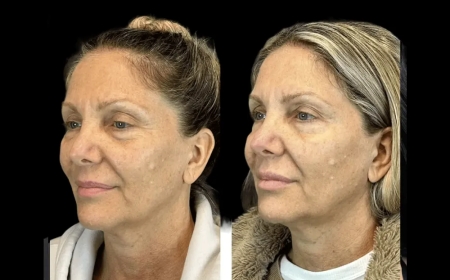Reviewing Vision: Retinal Organoid Research Breakthroughs

Your eyes are among the most complex and delicate structures in your body, yet millions face sight-threatening conditions with limited treatment options. What if cutting-edge science could mimic the retinas intricate layers to better understand and even combat these disorders? Thats where retinal organoid research steps in.
Using stem cells to grow miniature, functional replicas of the human retina, researchers are uncovering insights into diseases like macular degeneration and retinitis pigmentosa. These tiny, lab-grown structures hold the potential to revolutionise how we study vision, develop therapies and even restore sight. As you explore the fascinating world of retinal organoids, youll discover how this research could redefine the future of eye health and medical innovation.
Lets Discuss the Retinal Organoid Research
Retinal organoid research emerges as a field where science and technology converge to replicate the complexities of the human retina. You will see researchers utilise stem cells, transforming them into three-dimensional tissue structures that simulate retinal functions. These organoids illuminate the intricate mechanisms underlying retinal development and disease progression, making them pivotal for advancing eye health.
In the case that you're exploring degenerative conditions such as macular degeneration or retinitis pigmentosa, retinal organoids function as essential tools. They let you observe disease pathways in controlled environments, offering insights into cellular behaviours and their interactions. This understanding might fuel the creation of novel therapies that target the root causes of vision impairment.
You will find that drug testing takes on new dimensions with retinal organoids. Traditional models can struggle to replicate the retina's detailed cellular architecture. However, through these biologically accurate models, researchers screen potential treatments more effectively. They reduce reliance on animal testing by providing a human-like alternative that demonstrates cellular responses to interventions.
Retinal organoid research also opens doors to genetic enquiry. When you model inherited retinal disorders, you gain a deeper grasp of the mutations driving specific conditions. This knowledge could contribute to developing treatments crafted to individual genetic profiles, presenting opportunities for personalised medicine.
Have you considered their role in transplantation? Scientists are exploring how retinal organoids might act as replacement tissues. This includes integrating functional cells with damaged retinas, a concept that promises hope for patients experiencing irreversible vision loss. While this application continues under investigation, its therapeutic potential remains significant.
This research continually intersects with cutting-edge methodologies. You might encounter advanced imaging techniques, CRISPR genome editing, or bioreactors during studies, which amplify precision and scalability. Each innovation aligns with the aim of addressing clinical challenges and understanding human retinal biology at an unprecedented depth.
Does the trajectory of retinal organoid research compel you to consider its broader implications? Beyond vision restoration, this domain contributes to developmental biology, disease modelling, and even regenerative medicine. It extends far past its immediate applications, demonstrating its value across the scientific landscape.
Advances In Cultivation Techniques
Progress in cultivation methods has reshaped how retinal organoids are developed, enabling precise control and improved outcomes. Enhanced protocols ensure these models reflect the biological complexity of the human retina more accurately.
Stem Cell-Derived Approaches
Stem cell-derived techniques have become the backbone of retinal organoid research. You see, guided differentiation of pluripotent stem cells forms layered structures mimicking the retinas intricate architecture. Researchers refine conditions using growth factors and signalling molecules to steer stem cells towards retinal-specific fates. In some cases, optimised media compositions support prolonged development, ensuring organoids display photoreceptor functionality.
Furthermore, you will find that lineage tracing aids in ensuring correct cell differentiation. These approaches generate highly reproducible results, offering platforms that respond predictably during testing. Stem cell-derived methods bridge gaps between basic science and therapeutic exploration.
3D Bioprinting In Retinal Models
3D bioprinting injects precision into retinal organoid fabrication. This method assembles cells and biomaterials layer by layer, forming structures resembling native retinal tissue. You might notice how the spatial accuracy of bioprinting helps replicate complex cellular layouts, vital for studying diseases or testing drugs.
The choice of bioinks in 3D printing determines scaffold integrity alongside cell viability. Hydrogels frequently serve this role, maintaining elasticity while supporting nutrient transfer. Techniques combining bioprinting with induced pluripotent stem cells show promise for scalable retinal constructs. Using automated processes reduces variability, ensuring consistent quality across experiments.
Applications Of Retinal Organoids
Retinal organoids demonstrate significant potential across diverse areas. You will find they provide practical models for understanding diseases, testing therapies, and exploring treatments targeting vision loss.
Drug Screening And Toxicology Studies
Retinal organoids offer you a reliable system for assessing drugs' effectiveness and safety. By mimicking human retinal tissue, these models allow you to observe cellular responses in a controlled manner. This reduces dependency on animal testing and enhances relevance to human conditions. For toxicology studies, you might use retinal organoids to detect retinal damage caused by experimental drug compounds. Because they replicate human retina architecture, they help identify toxic effects that may otherwise go unnoticed.
Insights Into Retinal Diseases
When studying retinal diseases, these organoids can help reveal intricate disease mechanisms. You can examine inherited diseases like Stargardts disease or retinitis pigmentosa using patient-derived stem cells developed into retinal organoids. This approach provides you with a personalised platform for identifying molecular pathways driving the disorder. Furthermore, diseases like age-related macular degeneration can be modelled by inducing pathological changes in the organoids, enabling you to explore potential therapeutic interventions. By studying the patterns and emergence of symptoms at a cellular level, you gain precise insights on disease progression.
Challenges In Retinal Organoid Research
The development of retinal organoids mimics the human retina, but key limitations exist when it comes to functional maturity. You see, organoids often fail to replicate fully developed retinal characteristics like light sensitivity or complex synaptic networks. Photoreceptor cells within organoids, for instance, might lack the structural and functional integrity seen in native tissue. In the case that youre exploring disease models or therapies requiring advanced retinal functionality, this can limit the relevance of findings. Researchers continue working to refine differentiation processes, yet gaps in achieving full physiological responses remain consistent obstacles.
Reproducibility often poses challenges in this field too, and you might even encounter variances between batches of retinal organoids. Factors such as cell source, differentiation protocols, and environmental conditions influence outcomes. When you grow cells from pluripotent stem cells, even small inconsistencies can lead to variability in retinal structure or cellular composition. This unpredictability can hinder studies aiming for consistent disease modelling or drug screening. Especially when complex experiments hinge on uniformity, researchers often refine protocols to minimise variability, enhancing organoid applications reliability and success rates over time.
Future Perspectives
Emerging advances in retinal organoid research are reshaping therapeutic landscapes. As these models evolve, they create exciting possibilities for real-world applications and deeper scientific understanding.
Integration With Biomedical Technologies
You will find that combining retinal organoid research with cutting-edge biomedical technologies might redefine experimental capabilities. With tools like single-cell RNA sequencing, scientists gain granular insights into retinal development. CRISPR-based techniques can enable manipulation of specific genes, revealing their role in retinal disorders. High-resolution imaging allows for precise tracking of cellular changes. In the case that bioreactors are employed, scalability and consistency in organoid generation are significantly enhanced. You might see studies pairing retinal organoids with microfluidics platforms, enabling sophisticated in vitro disease modelling systems.
Potential For Clinical Applications
Translating retinal organoid innovations into clinical settings poses unique potential. You might encounter these models being explored for their suitability in cell-based transplants to treat degenerative conditions. Their ability to replicate disease-specific cell behaviours supports personalised medicine, tailoring interventions to your unique genetic profile. Stem cell-derived retinal sheets could serve as a repairing tool for damaged retinas. In pre-clinical testing, you will notice organoids offering accurate, human-like responses to therapeutic agents. This reduces risks linked to drug development stages, enhancing reliability and safety before clinical use.
In Closing
Retinal organoid research is transforming how you understand and address complex retinal diseases. By bridging the gap between laboratory models and human biology, it offers unprecedented opportunities to explore disease mechanisms, develop targeted therapies, and advance regenerative medicine.
As this field evolves, it continues to push the boundaries of innovation, integrating cutting-edge technologies to refine its applications. Whether through personalised medicine, improved drug screening, or potential cell-based therapies, retinal organoids hold immense promise for reshaping the future of vision science and beyond.








































